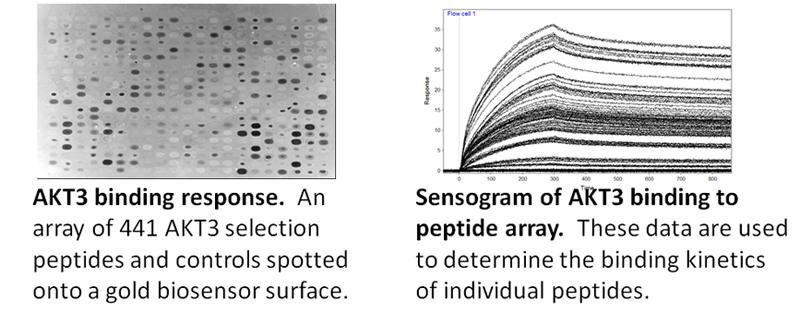LaBaer Lab | Home
NuProMers
Investigators: Ji Qiu, Ph.D., Mitchell Magee, Ph.D., Gokhan Demirkan, Ph.D., Justin Saul and Joshua LaBaer, M.D., Ph.D.,
Collaborators: John Chaput, Ph.D. (Center for Evolutionary Medicine and Informatics, Biodesign Institute)
Creating protein affinity reagents on a proteome-wide scale is the next grand challenge in human medicine. High quality protein capture reagents are critical for the elucidation of protein function, molecular diagnostics and even therapeutics. Recent acceleration in protein discovery will require affinity reagents to nearly all proteins.
To achieve this goal, we have developed a new and innovative concept for creating bivalent affinity reagents called "NuPromers." Our pipeline begins with a high-throughput protein production system for generating target proteins followed by a high throughput selection for high affinity (typically low nanomolar) peptides using a state-of-the-art mRNA display system capable of searching libraries of >1012 different peptides. Peptides produced by the selection are ranked by Surface Plasmon Resonance Imaging (SPRi) to identify candidate ligands with the highest affinity and specificity for their cognate protein. High quality peptides are then examined in pairwise combinations on synthetic DNA scaffolds using our ligand interactions by nucleotide conjugates (LINC) technology to identify the optimal peptide pair and linker (distance and geometry) required to produce a NuPromer. Our preliminary data demonstrates that NuPromers are straightforward to produce and bind their targets with low to sub-nanomolar affinity. Moreover, straightforward chemical approaches make NuPromers a cost effective alternative to traditional antibodies that can be produced in gram quantities with readily available and quality-controlled methods. We believe our platform and bivalent affinity reagents will have a broad application in protein function, molecular diagnostics and therapeutics.
Identification of peptides with high affinity for antigens using mRNA display

Real-time, high-throughput protein interaction analysis


